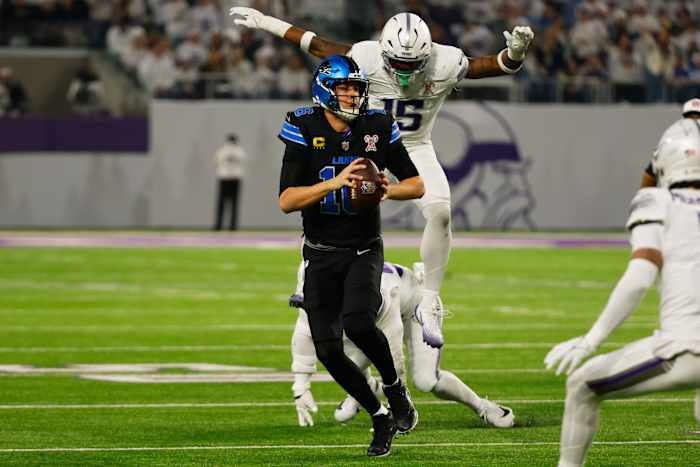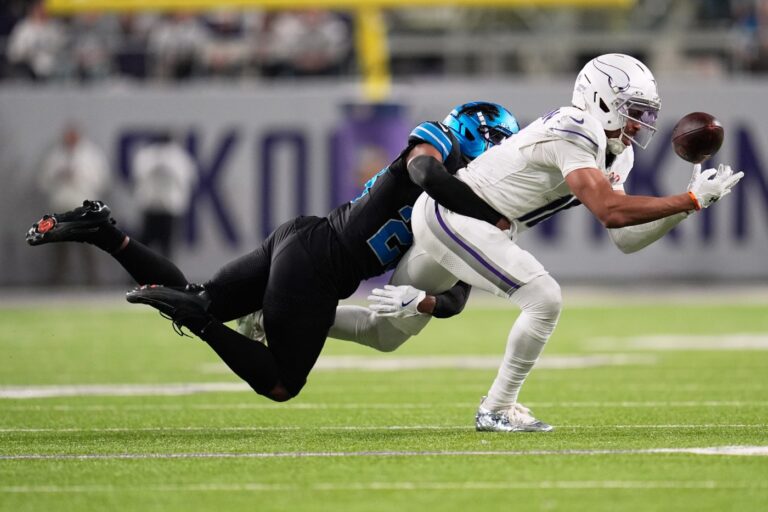
When NFTs, or non-fungible tokens, first entered the spotlight, they were just simple digital collectibles. Objects like digital art pieces, avatars, and other virtual assets took the world by storm, ultimately reshaping how people perceive ownership online. But their role has evolved significantly since the early hype cycles. As the underlying technology matured, so did its use cases, moving beyond speculation into more utility-driven ecosystems.
One of the most compelling shifts has been in the gaming industry. NFT-based games are no longer experiments or niche projects. Rather, the notion has evolved into fully developed, user-centric platforms that offer genuine ownership, interoperable assets, and new forms of digital economies. Players are now allowed to own in-game assets that exist independently of centralized servers.
Furthermore, by integrating play-to-earn or own-to-play models, many of these games offer users the potential to generate real value through their time, skill, or creative contributions. From competitive strategy games to expansive metaverses, the NFT gaming space is fostering new forms of digital economies—ones where engagement can translate to tangible rewards.
The following list highlights 12 standout NFT games that are leading the charge, each with its own approach to gameplay, asset ownership, and player empowerment:
—
### 1. CryptoMines
CryptoMines is a sci-fi-themed NFT game focused on building and managing a virtual mining empire. Players acquire worker NFTs, deploy them across various planets, and extract resources that can be traded for tokens.
The core mechanic revolves around optimizing mining operations, upgrading workers, improving planetary infrastructure, and strategically managing resources to maximize returns. Dark Matter (RUX) functions as the in-game currency, while mined resources can be converted to TERNAL, the game’s primary reward token.
Players can also stake tokens for passive income or trade NFTs for potential gains. Success in the game often depends on how well players understand market trends and refine their mining strategies over time.
While the game’s popularity has cooled compared to earlier highs, CryptoMines still offers a structured, strategy-oriented experience. Its moderate learning curve, layered economy, and potential for optimized returns continue to attract players with a focus on planning and resource management.
—
### 2. Alien Worlds
Alien Worlds is a decentralized metaverse where players mine resources, manage land, and participate in planetary governance. Set across multiple explorable planets, the game uses NFTs to represent tools, land, and avatars, each playing a functional role within its economy.
Players earn Trilium (TLM), the game’s native token, primarily through mining but can also stake TLM to influence governance or rent out land for passive rewards.
One of the game’s most unique features is its layered gameplay, which allows different types of players to focus on what’s most important to them and be as involved in the game as they would like. In other words, casual players can focus on mining and daily missions, while more invested users can take part in council elections, resource allocation, and land development.
Each activity feeds into a broader, player-driven economy that balances accessibility with long-term engagement.
—
### 3. Decentraland
Decentraland offers a user-owned virtual world where players can explore, create, and monetize experiences within a fully decentralized metaverse. Built on the Ethereum blockchain, the game revolves around digital land ownership, with each parcel existing as an NFT.
Players can build interactive spaces such as art galleries, games, and full-scale businesses—generating income through activities like renting land, hosting events, or selling digital goods.
The native token, MANA, facilitates in-game purchases, trade, and governance. New users can casually roam the open world or participate in quests, while more experienced players may dive into custom scripting, scene building, or decentralized app creation.
Though not centered on traditional gameplay loops, Decentraland has carved out a space in the NFT ecosystem as a sandbox for digital creativity and ownership.
—
### 4. My DeFi Pet
My DeFi Pet is a pet-themed blockchain game that combines elements of digital pet collection, breeding, and battling with DeFi mechanics. Players collect, breed, and evolve a variety of digital pets, each with unique traits and appearances.
These pets can be trained, enhanced, and used in battles against other players in turn-based matchups. The game’s economy is powered by DPET, the native token used for breeding, purchasing new pets, crafting items, and participating in events.
Players can earn DPET through battles, selling rare pets in the marketplace, staking, or engaging in in-game DeFi activities such as liquidity pools and lending protocols.
While the core mechanics like collecting and training are beginner-friendly, earning any form of substantial rewards requires deeper involvement—namely breeding high-value pets or mastering battle strategies.
As the game’s market activity has slowed, profitability depends more on long-term planning and in-game engagement.
—
### 5. Nine Chronicles
Nine Chronicles is a fully decentralized, open-source role-playing game (RPG) where players journey through a procedurally generated world filled with combat zones, crafting systems, and evolving quests.
With no central server, the game runs entirely on blockchain, giving players full ownership over their in-game assets and progress.
Gameplay revolves around exploration, crafting, and combat. Players collect resources from the environment, craft powerful gear and consumables, and fight monsters across multiple realms.
The in-game economy is driven by NCG, the platform’s native token, which is earned by mining resources, trading items, and participating in tournaments or governance proposals.
As a play-to-earn game, Nine Chronicles offers multiple earning paths, ranging from selling crafted goods and raw materials to competing in ranked challenges.
While the decentralized infrastructure adds transparency and player control, it also introduces a steeper learning curve.
—
### 6. Axie Infinity
Axie Infinity combines turn-based strategy with digital asset ownership. Players build teams of Axies (NFT-based avatars), each with unique traits and abilities, to create strong teams.
The core gameplay involves collecting, breeding, and battling Axies in competitive arenas where tactical decision-making is key.
Rewards come in the form of Smooth Love Potion (SLP) and Axie Infinity Shards (AXS)—tokens that fuel breeding and can be traded for other assets.
Both tokens are particularly popular in Southeast Asia, with well-traded pairs like AXS-PHP and SLP-PHP.
Players earn through gameplay and asset management, breeding rare Axies, climbing battle ranks, or participating in the game’s scholarship model, which lends Axies to others.
Though the market is more competitive than its early days, Axie Infinity remains a well-established game with an active community.
—
### 7. Gods Unchained
Gods Unchained is a competitive digital card game that combines traditional trading card game (TCG) mechanics with blockchain-powered ownership.
Players build decks using cards aligned with specific gods, each offering distinct powers and strategic advantages.
Battles are turn-based, requiring timing, card synergy, and resource management to outmaneuver opponents.
The game’s economy centers around GODS, a native token earned through ranked wins, daily quests, and special events.
Tokens can be used to craft new cards, stake for passive income, or be traded externally.
Unlike many blockchain games, Gods Unchained offers a true free-to-play model, giving new players a base set of cards to start competing without upfront costs.
While casual modes provide a gentler introduction, climbing ranks demands tactical depth and mastery of deck-building.
For fans of strategic gameplay and asset ownership, it offers a rewarding play-to-earn experience.
—
### 8. Pixel
Pixel is a play-to-earn metaverse game where players collect, breed, and manage avatars called Pixelmons.
Within its expansive virtual world, users can farm, craft, build structures, and engage in battles—all while customizing land and assets for utility and style.
Social interaction plays a strong role, with guilds, community events, and player-run economies forming the experience’s backbone.
The in-game economy revolves around crafting items, managing farms, and trading goods and assets for the upcoming IXEL token.
Players can monetize progress by selling crafted goods, agricultural products, and rare discoveries in the marketplace.
Owning land offers strategic advantages, enabling passive income through farming, leasing, or production.
Although Pixel is still in early development, it shows long-term potential for committed players and creators.
Currently, earning profits requires deeper time and resource investment. Farming and crafting are accessible to beginners, but advanced exploration and social competitions demand planning, collaboration, and skill.
—
### 9. Sorare
Sorare is a fantasy football game that merges digital collectibles with real-world sports strategy.
Players build teams using officially licensed player cards from global football leagues and compete in fantasy tournaments mirroring real match outcomes.
Each card represents a real athlete and varies in rarity, offering strategic depth when forming lineups.
Players earn rewards by participating in tournaments where their players’ real-life performance determines outcomes.
High-performing managers can win valuable NFTs or SOR tokens. Additionally, savvy trading on the transfer market allows for extra profit.
Card values fluctuate based on athlete performance, rarity, and market demand, making timing and prediction crucial.
Sorare maintains a strong player base, especially among football fans and fantasy sports enthusiasts.
While entry is free for casual players, competition and complexity increase at higher stakes.
—
### 10. Splinterlands
Splinterlands is a collectible trading card game featuring strategic deckbuilding and fast-paced, turn-based combat.
Players form teams of NFT-based cards, each tied to a specific element known as a ‘Splinter’, and enter auto-battles determined by power, synergy, and placement.
Though matches play out automatically, the outcome depends heavily on pre-battle strategy under mana caps and rule-specific constraints.
Each card has unique stats and abilities, with deep understanding of the evolving meta required for success.
Earnings come from ranked battles, tournaments, and daily quests, with Dark Energy Crystals (DEC) as the primary reward token.
Players also earn Splintershards (SPS), a governance and staking token that unlocks further earning opportunities and influence over game decisions.
Splinterlands features an active rental market where players lease high-value cards for passive income or strategic advantages.
Its layered ecosystem appeals to both casual players and competitive strategists, offering low-cost entry but rewarding investment in game mechanics and economies.
—
### 11. Realms of Alurya
Realms of Alurya is an RPG set in a fantasy world with four elemental biomes: Earth, Water, Fire, and Ice.
Players explore unique locations and dungeons and craft their own gear.
The game supports both PvP and PvE combat modes, allowing battles against monsters, loot collection, and earning tokens and NFTs.
Realms of Alurya runs on the Ronin network, with NG as the native in-game token used for purchases, staking, and governance.
—
### 12. My Neighbour Alice
For fans of games like Minecraft or Animal Crossing, My Neighbour Alice is a top blockchain choice.
It is a play-to-earn game that offers a metaverse experience where players buy virtual land, build houses, and interact with animals, buildings, wearables, and more.
Players take part in daily tasks like farming, fishing, and beekeeping to earn rewards.
There is also an NFT marketplace for buying, selling, or customizing in-game assets for profit.
Participants can earn passive income by staking ALICE tokens or lending NFTs to others.
—
### Conclusion
Play-to-earn games offer players the unique opportunity to autonomously own their digital assets. Every character, weapon, outfit, or item acquired within these games is a digital asset that can be sold or traded.
This kind of decentralization rewards the time and skills invested by players, ushering in a new era of gaming economies where engagement pays off in tangible ways.
—
**Disclaimer:** Readers are encouraged to do their own research. Ambcrypto is not liable for any outcomes related to the use of information, products, or services mentioned. This content may include affiliate or partner links.
https://bitcoinethereumnews.com/nft/top-12-nft-games-of-november-2025/



